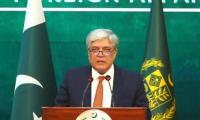“The single biggest problem in communication is the illusion that it has taken place!”
– George Bernard Shaw
A relatively less appreciated aspect of the Covid-19 success story in Pakistan is the powerful, diverse and continuous risk communication. This involves incessant information sharing and messaging, employing all possible communication modes and languages involving all possible communicators. This has been an impressive story in itself.
And it has made an impact! In Pakistan, we prioritised four key behaviour messages: using face masks, repeated hand-washing, physical distancing and staying at home when sick and these have been repeated throughout these months. Data was collected for the National Seroprevalence Study in July from randomly selected 10 districts covering more than 25 cities and proportionate rural areas.
Apart from immunity level, the study also collected information about SOP compliance and found adherence to face mask use to 60 percent and hand washing by 70 percent of the population. Even if it sounds hyperbolic, the fact remains that a large number of Pakistanis followed the instructions – large enough to make a difference. This behaviour change has immensely contributed to interruption in the transmission of disease.
In the early phase of the response, led by Pakistan's Ministry of National Health Services, Regulations and Coordination (MoNHSRC), a Taskforce on Risk Communication and Community Engagement (RCCE) was constituted with representatives from other ministers and development partners. The taskforce was actively supported by the Inter Services Public Relations (ISPR), the media wing of the Pakistan Armed Forces.
After the establishment of the National Command and Operations Centre in late March, a more systematic, data-driven and targeted response to the epidemic was made possible. The objective was to reach maximum and diverse audiences across the country, with consistent and actionable messages. Risk communication was based on guidelines and SOPs. In total, to date, more than sixty technical guidelines and SOPs, ranging from how to wear a mask to how to undertake burial of Covid-19 victims to the recent SOPs issued for educational institutions. These were developed and endorsed by an expert committee I constituted with the participation of experts from all provinces and areas.
A weekly examination of the situation was undertaken by the taskforce and strategic response adjusted according to the changing priorities. All communication was based on a basic principle that risk is not just a scientific measure of any hazard, but also how people perceive it, raise (or not raise) concerns about it and act (or not act) to avoid it.
Primarily, three strategic approaches were employed to keep people informed – policy statements, Public Service Messages (PSMs), and social media. For policy statements during daily press briefings, public education was emphasised. For PSMs, the same information was used in specifically designed messages that were repetitively aired on TV and radio, reaching millions of television viewers across the country. All policy statements, PSMs and social media messaging were linked with the extremely busy MoNHSRC Covid-specific website.
A unique mode of communication was utilised with the close cooperation of the Pakistan Telecommunication Authority. More than two-thirds of the population (167 million, according to estimates) have mobile phones in Pakistan. This dedicated audience was reached through text messages and message tones. The messages advised what to do and what not to do in the evolving context of Covid-19 in the country. Due to the scale and importance of these messages, an official policy has been followed for the development and approval of each message statement. Underprivileged rural communities that may not have even mobile phones were reached through teams of polio workers, vaccinators, or from mosques through announcements.
Communication by definition is a two-way phenomenon. During an emergency, people develop varying perceptions about the same message and have a number of their own questions. We started a toll-free, call-in national helpline on the day the first Covid-19 case was announced – on February 26, 2020. This helpline addressed questions in people’s mind that varied from simple issues like symptoms of the disease and preventive actions; or complex issues like burial of the dead body; where and how to quarantine; who should get tested, when and from where; and effectiveness of new therapies, in a timely manner.
The helpline was later also extended to doctors, nurses and paramedics – the real heroes on the frontline in this emergency. Around 7245 health workers got infected in Pakistan with Covid-19 (two percent of the national case count) and 85 health workers lost lives, until September 26, 2020. Obviously, this brings tremendous psychological stress. As part of a ‘WeCare’ campaign, this helpline received calls from more than 850 health professionals fighting on the front lines.
One major issue faced during the Covid-19 pandemic has been the handling of false information, fake news, rumours and criticism on the media based on wrong facts. All this also shapes public perception. To counter this, we established a monitoring system of all forms of media and the team tried to quell the rumours and provided the corrected information – but this still remains a challenge. Electronic media and social media were difficult to manage in this connection. Part of the challenge are also the inadequate legal frameworks of Pemra and controversial federal government rules on social media content which do not allow easy action against those spreading disinformation. This is an area for closer analysis and strengthening.
Another challenge faced during this emergency is the political blame-game which continued ad nauseam through spokespersons of political parties. They distorted facts for political point-scoring. Similar challenge is posed by legions of self-appointed experts who have spread wrong information through the media, and confused people. Often ‘experts’ belonging to government organisations give their personal opinions which are contrary to the government position; that poses problems. There needs to be a clear government policy about who can and cannot speak on the media on its behalf.
Generally, since February this year, the media has played a tremendous role in continuously keeping people informed of the evolving situation and educating them on preventive measures. Government efforts, development partners’ support and proactive media engagement together have resulted in behaviour change. I must commend especially the role private media owners have played during this emergency by investing in developing public service messages and by dedicating free airtime.
We are now at a point where educational institutions are gradually opening and at the same time cases have started showing a slight upward trend. Resurgence or second wave is a real possibility in Pakistan. People seem to have developed a perception that Covid-19 is over. Ongoing and evolving risk communication will continue to be the key.
The writer is former special assistant to the PM for health.
Email: zfrmrza@yahoo.com
Now, court can only act upon applications filed under its jurisdiction
Fact is that let alone Pakistan, Trump hasn’t really spoken much for any South Asian country, not even India
By embracing quantum mechanics, humanity has unlocked technologies once thought unimaginable
Regular reporting could ensure accountability and adaptive management
Report assesses readiness of over 190 countries to meet demands of the international job market
In Pakistan, prospect of introducing Starlink has been topic of discussion, particularly due to frequent internet...







